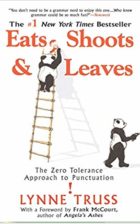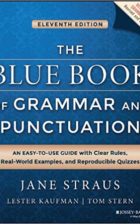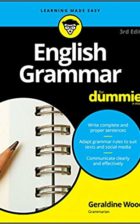What are indirect questions?
Indirect questions are statements or questions that reframe a direct question by relaying it in reported speech. To make this clearer, let’s look at some direct questions:
- “Is this your bag?”
- “Do you know the time?”
- “Have you seen Emma lately?”
To form questions in English, we either change the word order (e.g., “This is your bag” becomes “Is this your bag?”) or we add the auxiliary “do” in order to create a question (e.g., “You know the time” becomes “Do you know the time?”).
Indirect questions are a little different. This is because they have the same word order as statements (that is, declarative sentences), and they do not add “do” to create a question. Instead, indirect questions are made by embedding them inside statements or other questions.
Let’s have a look at the language we use to do this.
Forming indirect questions

To start, let’s turn the examples above into indirect questions:
- “The person asked if this was my bag.”
- “I was asked if I knew the time.”
- “I’d like to know if you’ve seen Emma lately.”
As you can see, the questions are now being framed indirectly as statements. We can even place an indirect question inside another question:
- Direct: “Where did she go?”
- Indirect: “Do you know where she went?”
In this example, the direct question (“Where did she go?”) has been embedded inside a question. You will notice that these indirect questions usually use an introductory phrase (e.g., “Do you …”), combined with an interrogative pronoun (e.g., “who,” “what,” or “which”), an adverb (e.g., “when,” “where,” “how,” or “why”), or “if/whether.”
To avoid confusion, let’s review a few more examples to see the differences between direct and indirect questions.
How to identify indirect questions
Now that we know that indirect questions can be embedded inside statements and other questions, we can be on the lookout for what patterns might help us to identify them more easily.
There are many types of introductory phrases that often start an indirect question. Some common ones include the following:
- “I wonder if …”
- “I would like to know whether …”
- “He asked me if …”
- “Do you know if …”
- “Can you tell me whether …”
- “Do you remember when …”
These phrases are almost always followed by an embedded question, which means that we are dealing with an indirect question.
Take a look at the following examples and note how the wording changes in order to create indirect questions:
- Direct: “Is Lucy here?”
- Indirect: “They want to know if Lucy is here.”
- Direct: “Does it happen often?”
- Indirect: “Do you know if it happens often?”
- Direct: “How heavy is your bag?”
- Indirect: “I would like to know how heavy your bag is.”
Levels of politeness

Indirect questions are fairly common in English, especially in more formal settings. This is because indirect questions have a politer and more formal tone than direct questions.
Here are some examples to illustrate the difference:
- Direct/casual: “What time is it?”
- Indirect/polite: “Could you tell me what the time is, please?”
- Direct/casual: “Is Emma dating anybody?”
- Indirect/polite: “I wonder if Emma is dating anybody.”
- Direct/casual: “Can I try next?”
- Indirect/polite: “Do you think I could try next?”
By comparing the different questions above, it is easier to see that direct questions are quite blunt in how they ask for information. That is why indirect questions (which soften this bluntness by embedding the question inside another statement or question) are preferred in more formal settings and interactions, where a politer tone is important.
* * *
For more help with your English grammar and writing, have a look at our resource page for the best guides and books available!
Stay in Touch!
Do you want to learn how to read, write, and speak English with confidence? Are there any grammar rules that you find hard or confusing? Drop us a comment to let us know and we’ll help you in your journey to learn English!









I didn’t know that indirect questions could also be used inside other questions. I thought they were always just used in statements, like without a question mark. Thanks explaining this – it helps a lot.
Hi Diya,
It’s a pleasure. We’re glad to hear this helped you 🙂
I hadn’t really thought about politeness with indirect questions, but that makes a lot of sense. It reminds me a lot of Japanese, actually, where the more indirectly you phrase something, the politer it usually is.
Hi AJ,
That’s an interesting comparison with Japanese, and it works on the same principle. Indirect language is usually more polite than direct speech by its very nature.
Thanks for helping with the different levels of politeness and tone. I always get nervous that I’m speaking and writing wrong, so this helps a lot.
Hi Mei,
We’re glad to hear this was helpful for you! And don’t be afraid to make mistakes—it’s a normal part of learning a language 🙂